My mom’s arachuvitta sambar recipe! Here is my favorite arachuvitta sambar recipe with parangikai or pumpkin – South Indian style lentil stew with pumpkin and freshly ground coconut masala.
Learn how to make the traditional arachuvitta sambar recipe with detailed step-wise pictures.
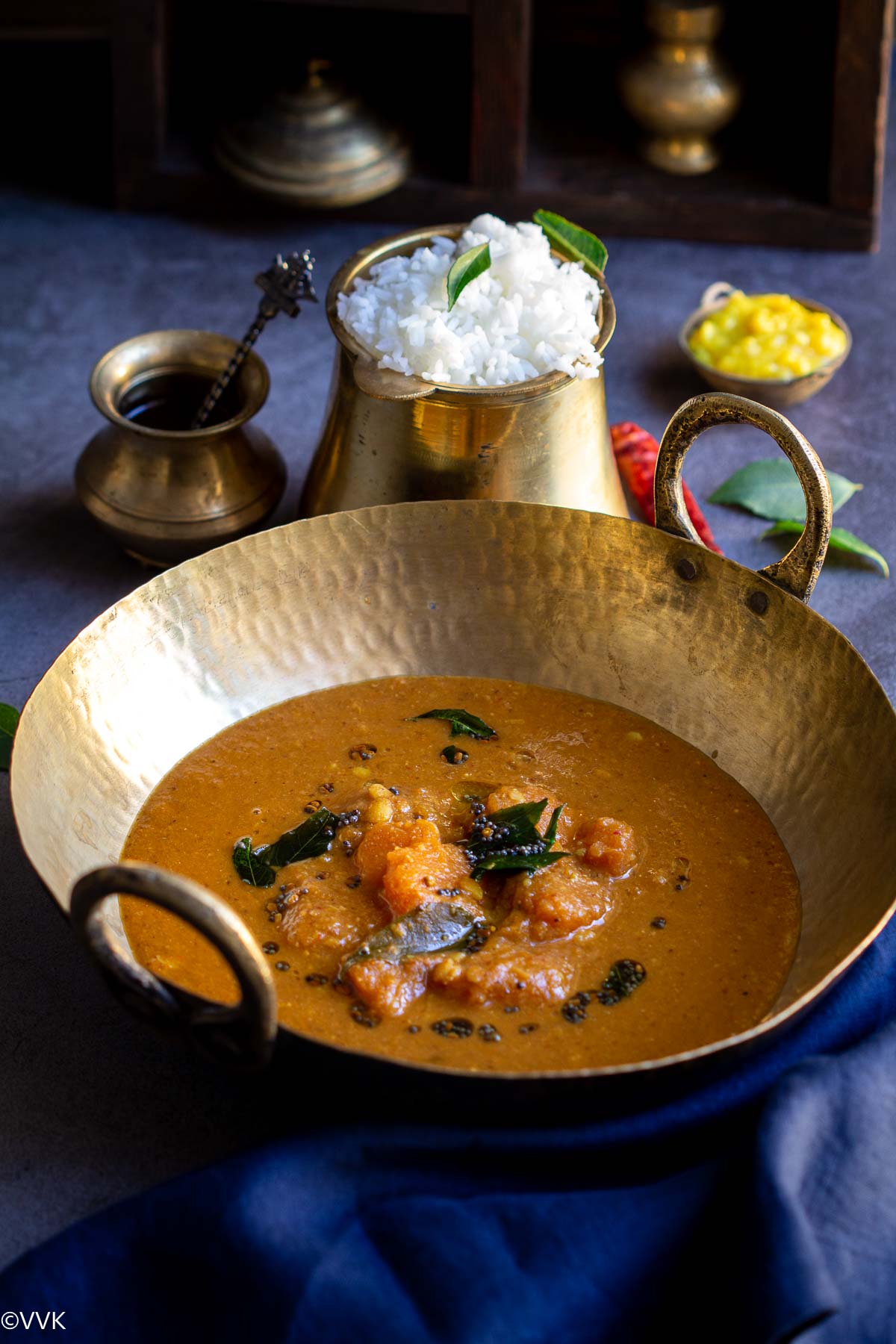
Call it parangikai or arasanikai sambar or yellow pumpkin sambar, this flavorful no-onion no-garlic sambar with freshly ground spices and coconut will tingle your taste buds.
Jump to:
Arachuvitta sambar
Arachuvitta(Tamil word meaning ground/grind) sambar or sambar with toor dal and freshly ground spices is my (our) all-time favorite recipe. I grew up eating it regularly when I say regular, atleast twice or thrice a week. Both at my mom’s place and in-laws place, sambar always means arachuvitta sambar. All non-arachuvitta sambar is paruppu kuzhambu (lentil-stew) or podi potta sambar.
Only after coming to the US, I started using the term sambar for paruppu kuzhambu. If you notice, I would have called my raw mango sambar as kuzhambu, and I have explained the same reason.
Last year, I shared my MIL’s version of arachuvitta sambar; now, it’s time for my mom’s version that I grew up eating. Yes, there are differences between their recipes, and I am sure every household will have its way of preparing the sambar masala.
My MIL’s version will have some sambar powder along with freshly roasted and ground spices. But my mom doesn’t add any sambar powder. The full flavor comes only from the freshly roasted and ground spices. So the measure of the coriander seeds and other spices are comparatively more. My mom’s sambar always reminds me of the swami samardanai (prayer and feast offered to all Gods and home deities), and I love the flavor of coriander seeds in the sambar.
The sambar procedure might sound lengthy, but you can do most of the tasks parallelly. So it’s not time-consuming, and the recipe is very straightforward.
Ingredients required for sambar
Pumpkin: That’s the vegetable I am using for this sambar. You can use veggies of your choice or mixed vegetables. But folks, as I mentioned in my vengaya sambar recipe, do try it with a single vegetable and enjoy the full flavor of it.
For the sambar masala: We need coriander seeds, urad dal, chana dal, fenugreek seeds, dried red chilies, and coconut. I have used both Guntur and Byadgi variety chili here for the spice and color. You can use either one and adjust as per your taste preference.
Toor dal: It’s another key ingredient in sambar. I have used only ¼ cup of toor dal for this measure. You can increase it up to ⅓ cup. While cooking the toor dal, we include turmeric powder as well. I have included gingelly oil as it yields mushy toor dal. But adding oil is optional.
Tamarind paste: I have used my homemade tamarind paste. You can use the paste or big marble-sized tamarind. Soak it in water and extract the juice.
Rice flour: I mix rice flour with cooked toor dal and add it to sambar, which helps to thicken the sambar. If you prefer thin consistency, skip the rice flour.
To temper: We need the standard tempering ingredients – oil, mustard seeds, fenugreek seeds, asafoetida, and curry leaves. We don’t add cumin seeds for sambar.
Apart from these, we need salt, jaggery(optional), and water.
Note on cilantro: We typically don’t add cilantro to arachuvitta sambar. Curry leaves become mandatory here, but if you can’t source, skip it. You can add a tbsp of cilantro but don’t add more than that. Don’t let the flavor of cilantro overpower the sambar.
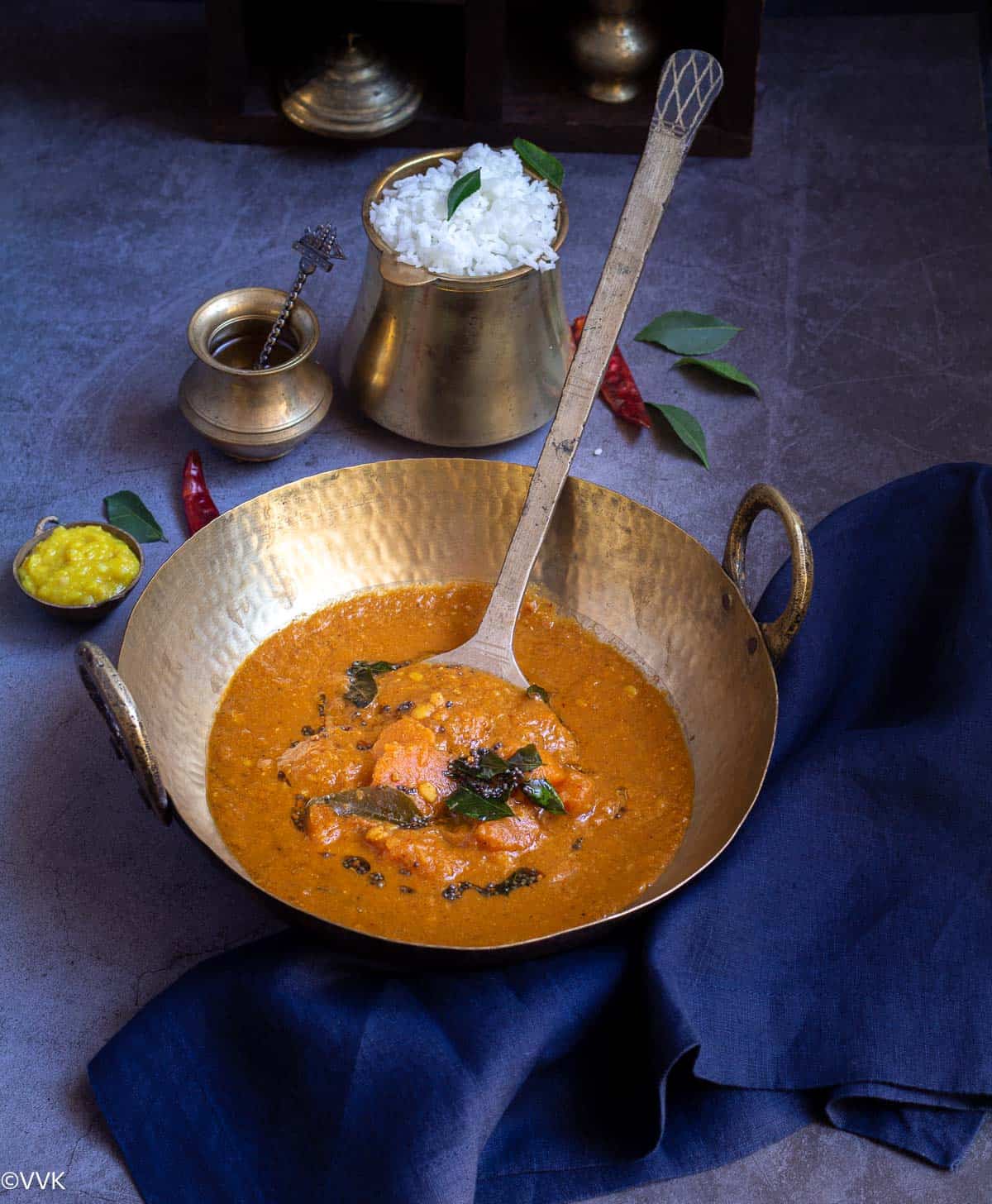
Dietary specifications and serving suggestions
By nature, sambar is vegan and nut-free. Use gluten-free asafoetida or skip it for the gluten-free version.
Serve sambar with rice (add a dollop of ghee and plain cooked toor dal with rice, and it elevates the flavor) and dry curry aka poriyal or kootu/gravy.
You can refrigerate a sambar for up to 2 days, and the leftover sambar tastes fantastic with all the flavors infused. Sambar freezes well too.
Without any further ado, let’s see how to make this arachuvitta sambar with pumpkin.
Arachuvitta sambar recipe
Cook the toor dal
- Rinse the toor dal and drain the water. Pressure cook the toor dal by adding ¾ to 1 cup of water and ¼ teaspoon of turmeric powder, and ¼ tsp gingelly oil, if using for 4 to 5 whistles. Let it cool and mash it.
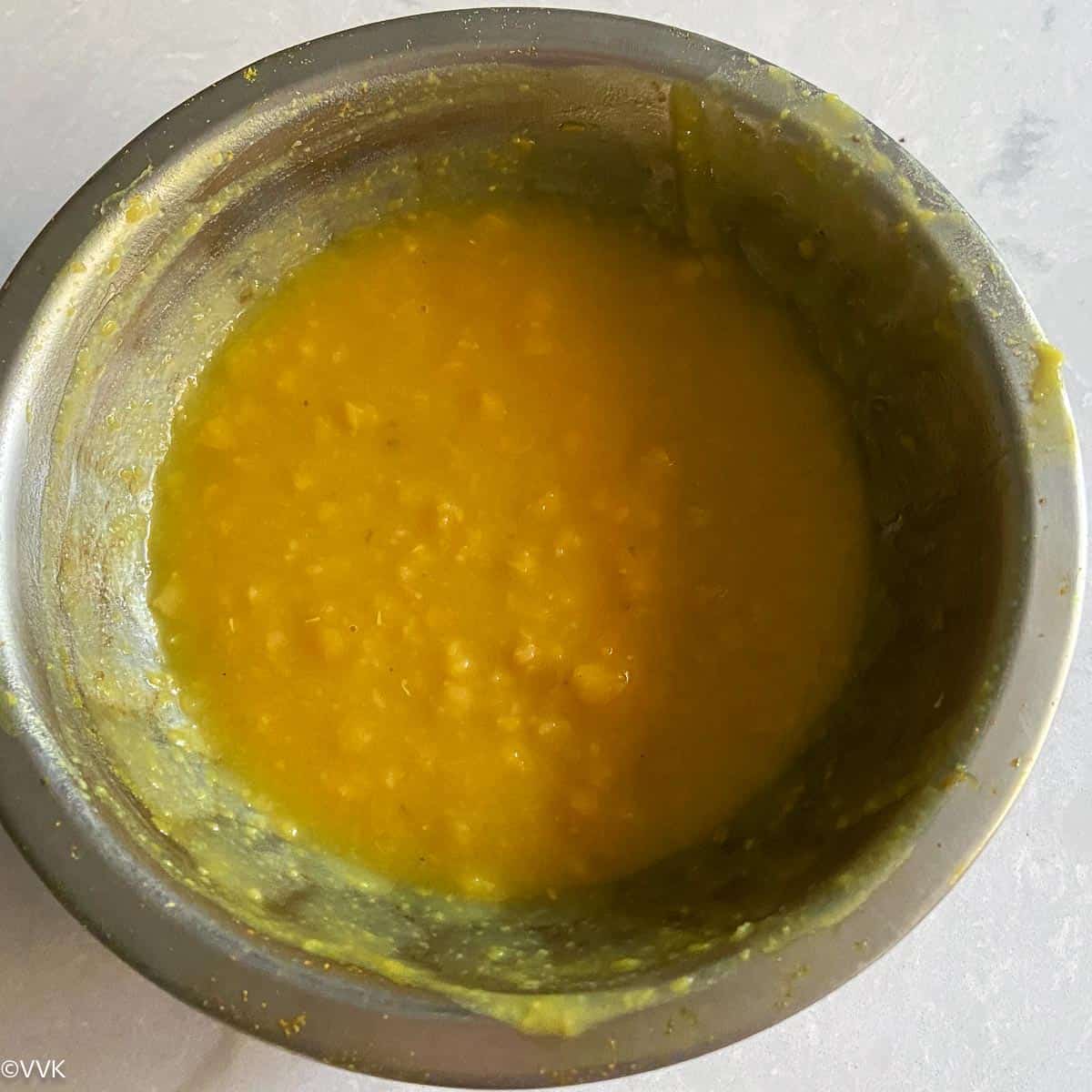
- Add the rice flour and ¼ cup of water to this dal, mix well, and set aside.
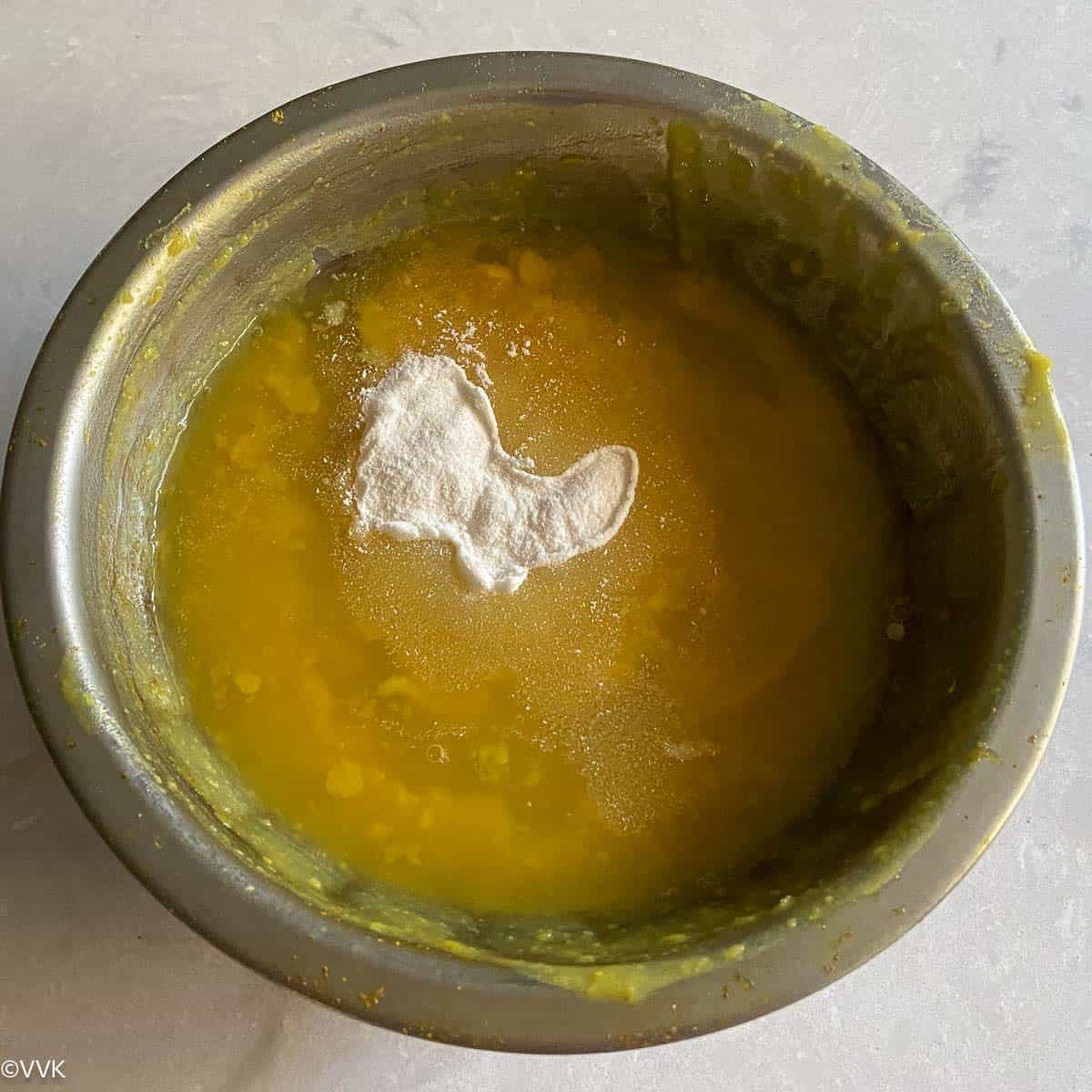
- You can also cook the dal in Instant Pot. As it’s ¼ cup of toor dal, you can use a PIP method and cook the toor dal for 20 to 25 minutes at high-pressure mode and release the pressure naturally.
Roast and grind the masala
- Heat ¼ teaspoon of oil in a pan, and when the oil is hot, add the coriander seeds, fenugreek seeds, urad dal, chana dal, dried chilies—dry roast all the above for 3 to 4 minutes over medium heat.
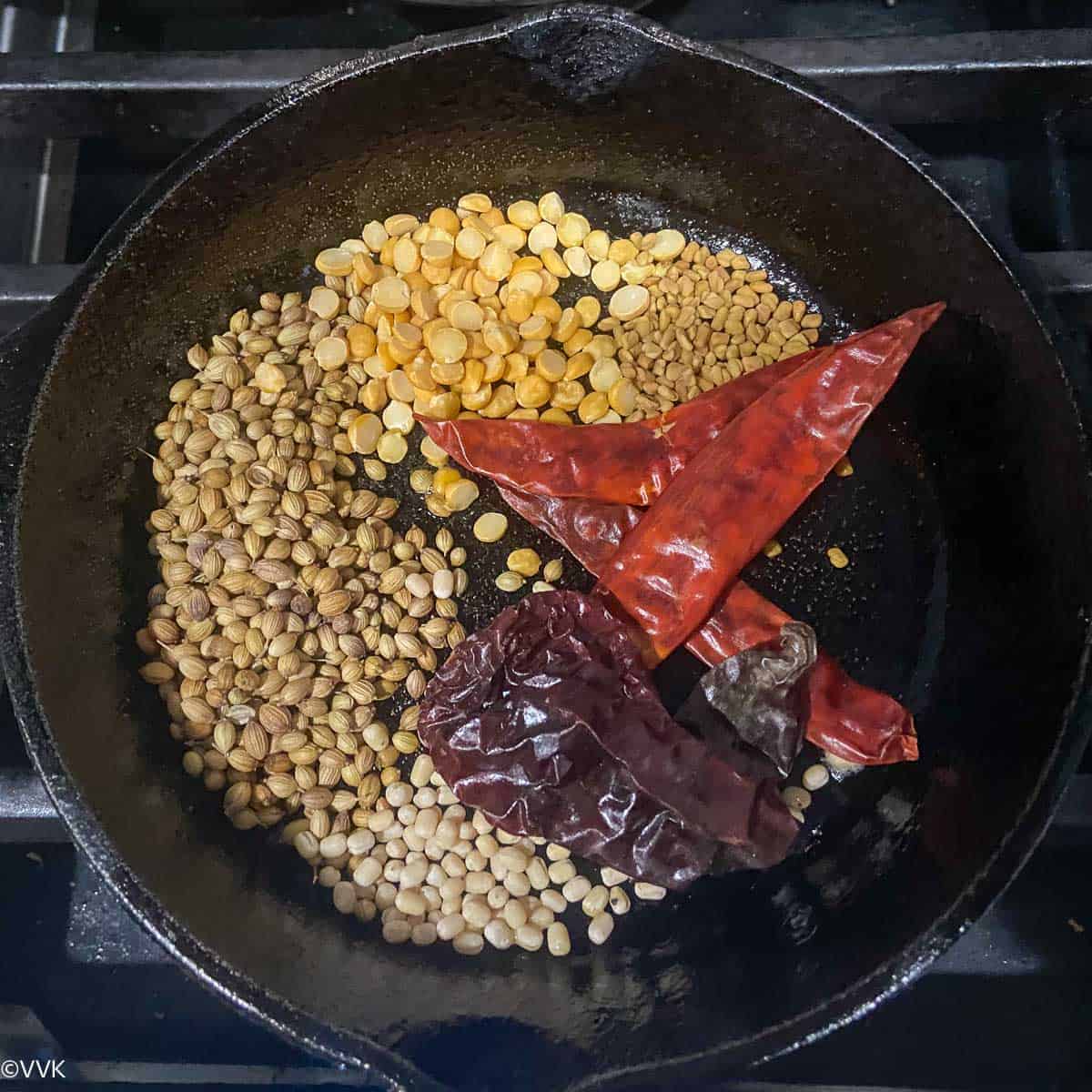
- Then add the coconut. After adding the coconut, turn off the heat—no need to roast for a long time.
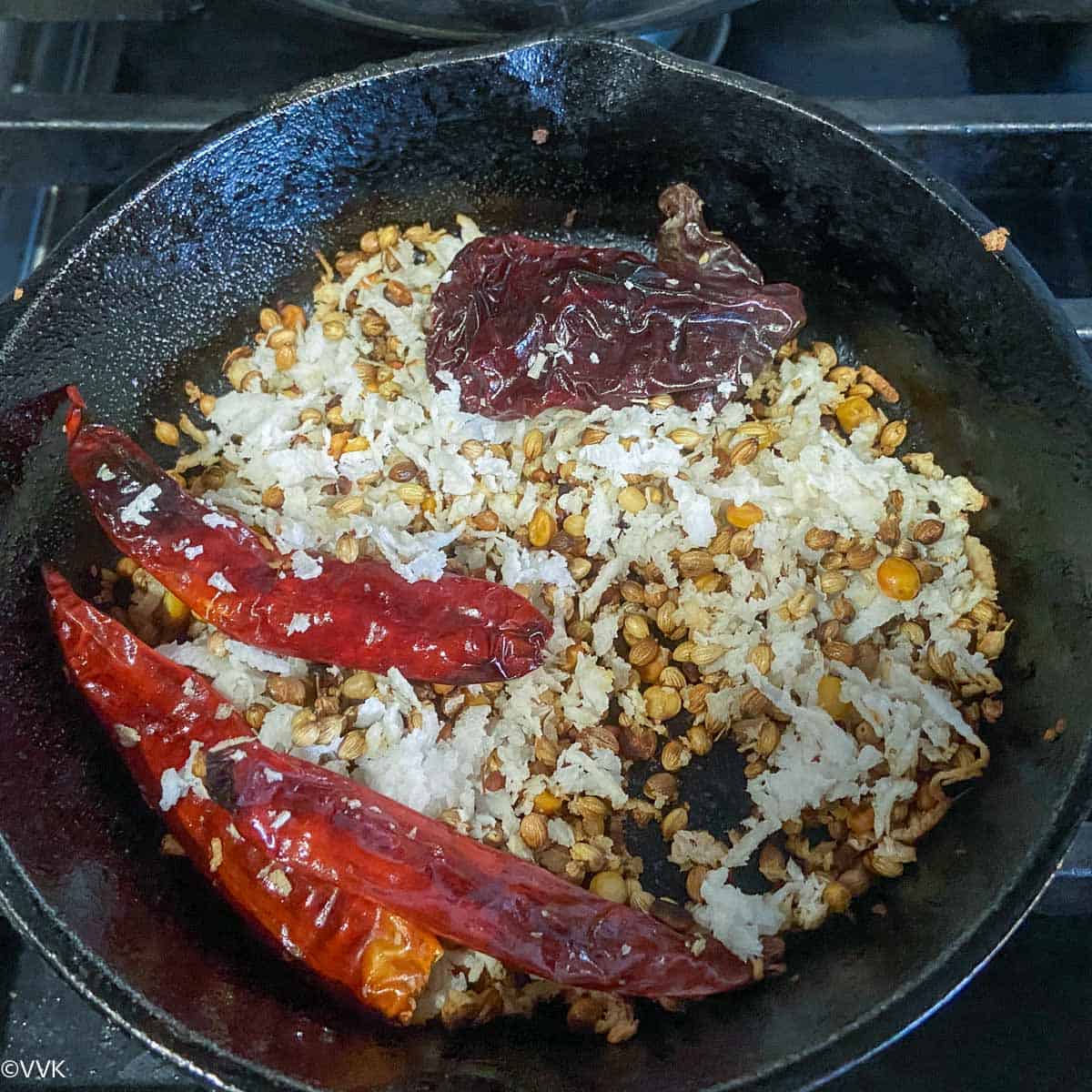
- Transfer it to a mixer jar and let it cool.

- Grind it with ¼ to ⅓ cup of water into a smooth paste.
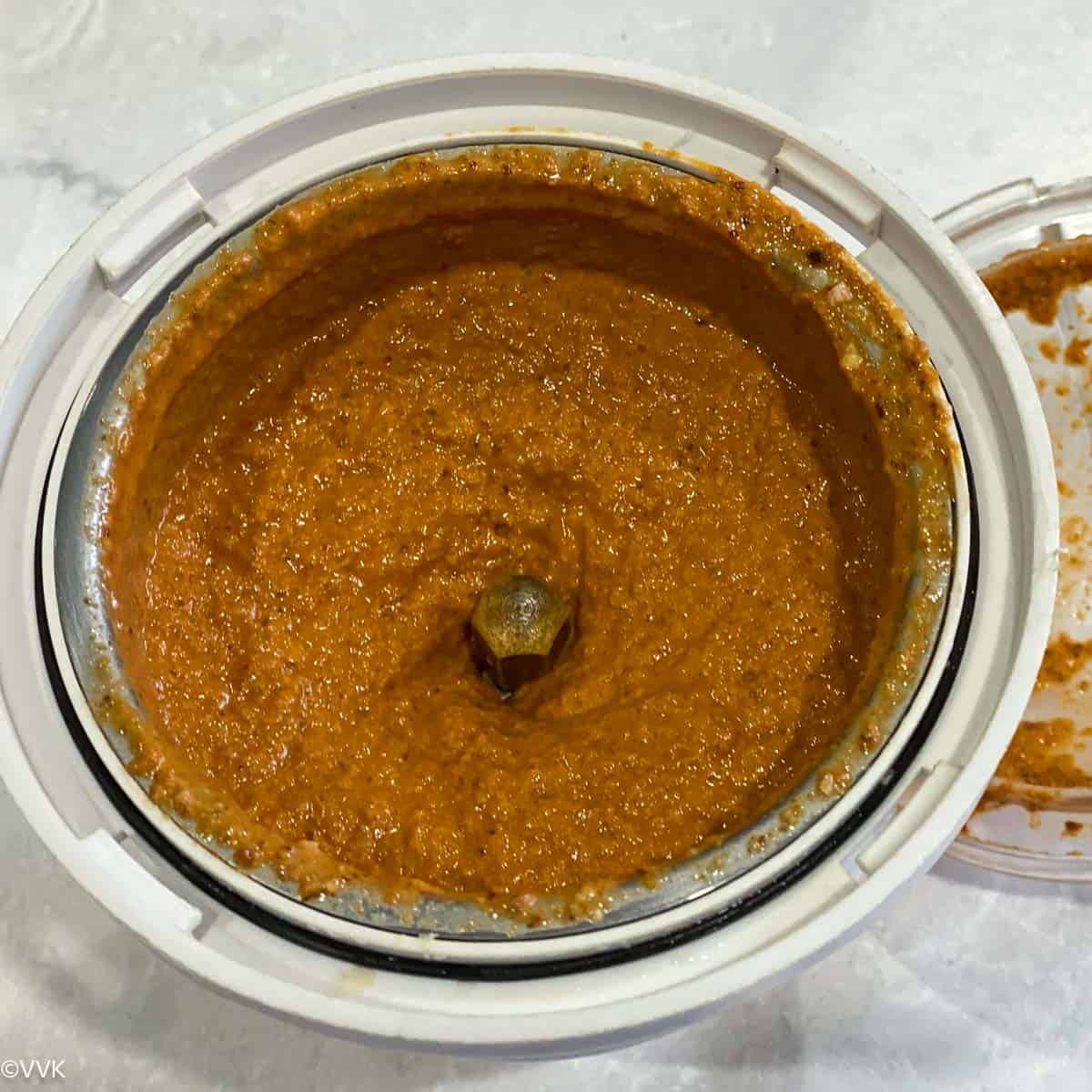
Prepare the sambar
- Take a saucepan or kadai with a heavy bottom, add the chopped pumpkin and 1 cup of water, and cook the pumpkin until it’s soft and tender, for about 10 minutes. I used my uruli vessel for the sambar.
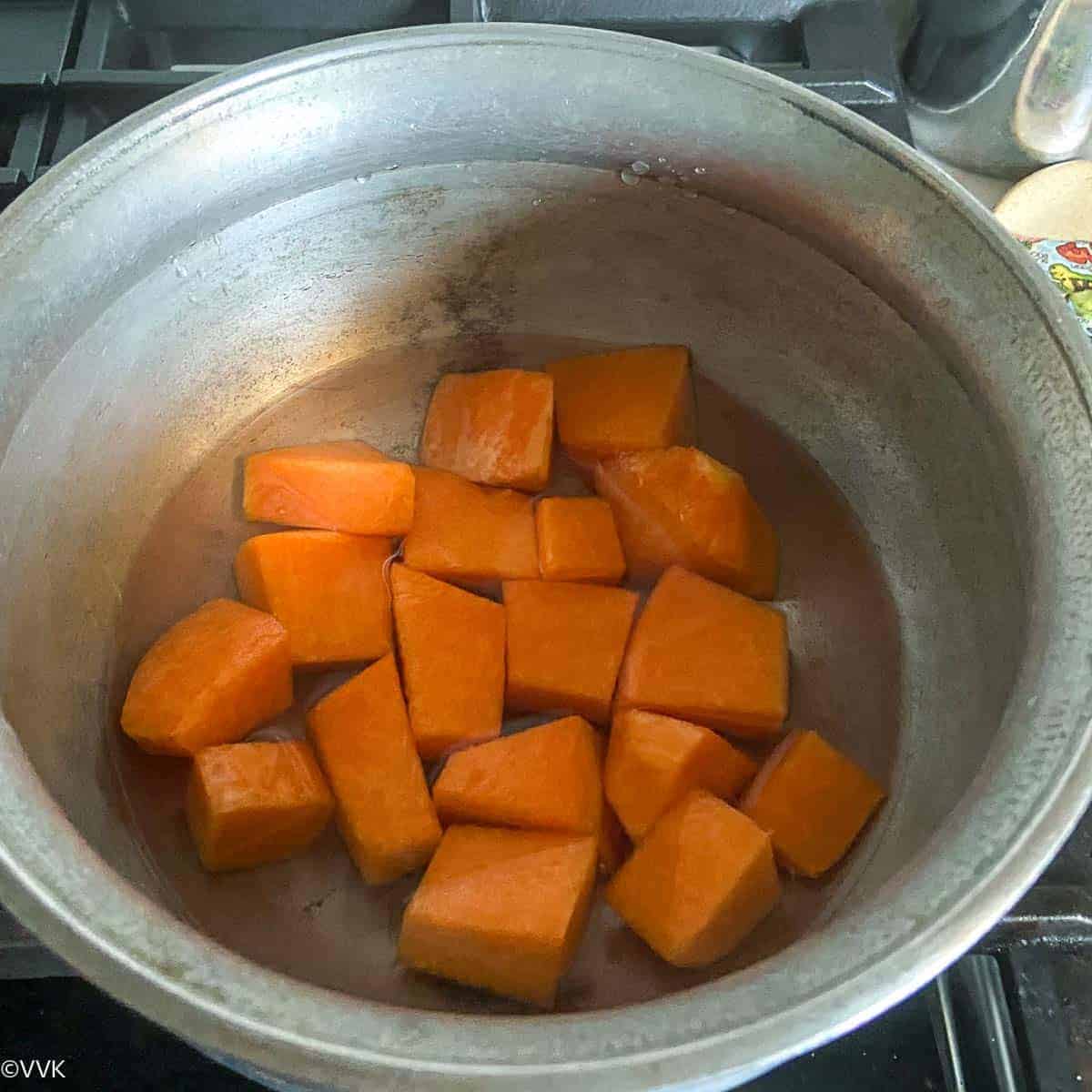
- Then mix the tamarind paste with ¼ cup of water and add it to the pumpkin mix. Add salt and let it cook for 5 minutes over medium-low heat.
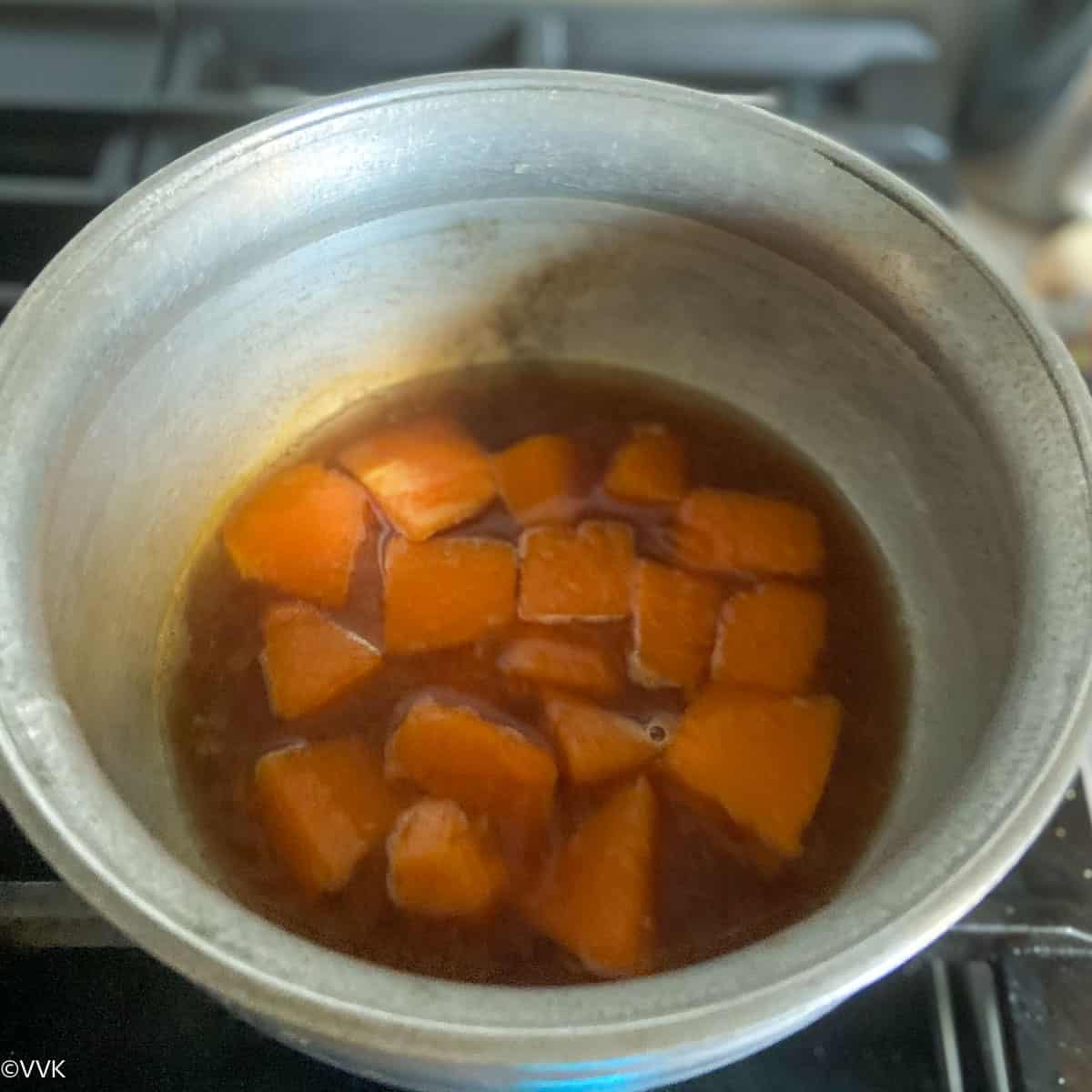
- Then add the ground paste, rinse the mixer jar with ¼ cup of water, and add it to the sambar.
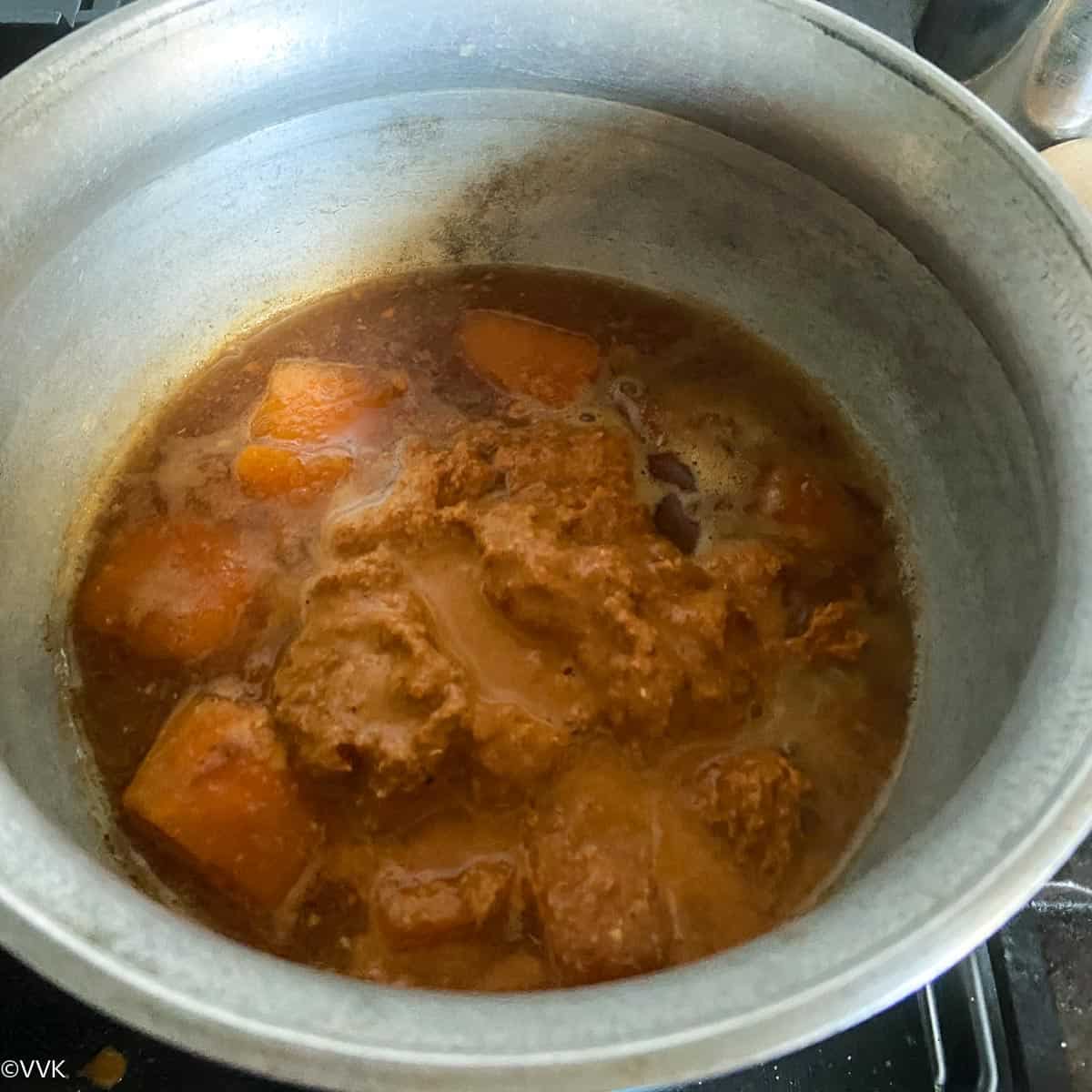
- Add the jaggery and curry leaves and bring the sambar to a boil.
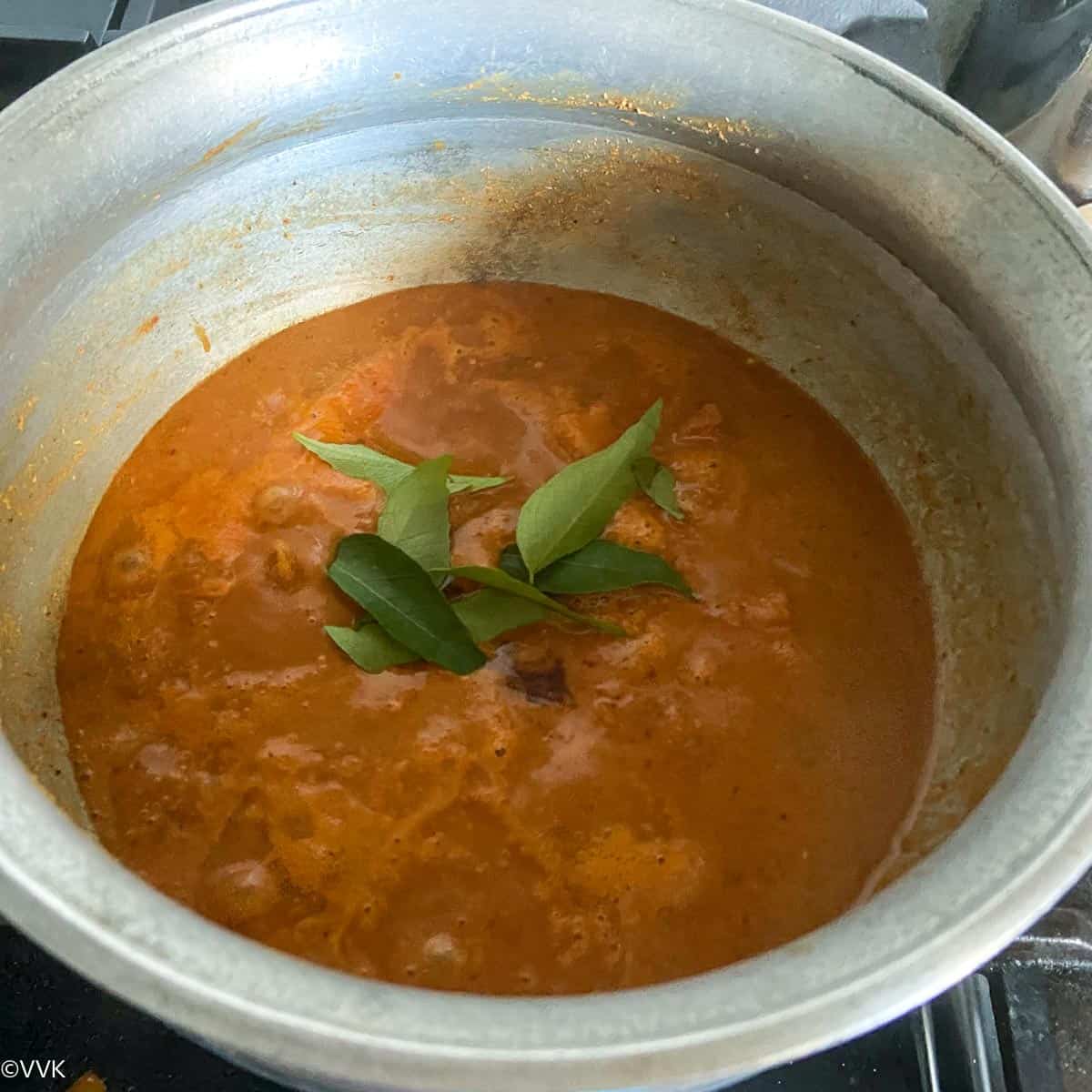
- At this stage, add the mashed toor dal with rice flour to the sambar and mix well. Bring the sambar to a boil and turn off the heat.
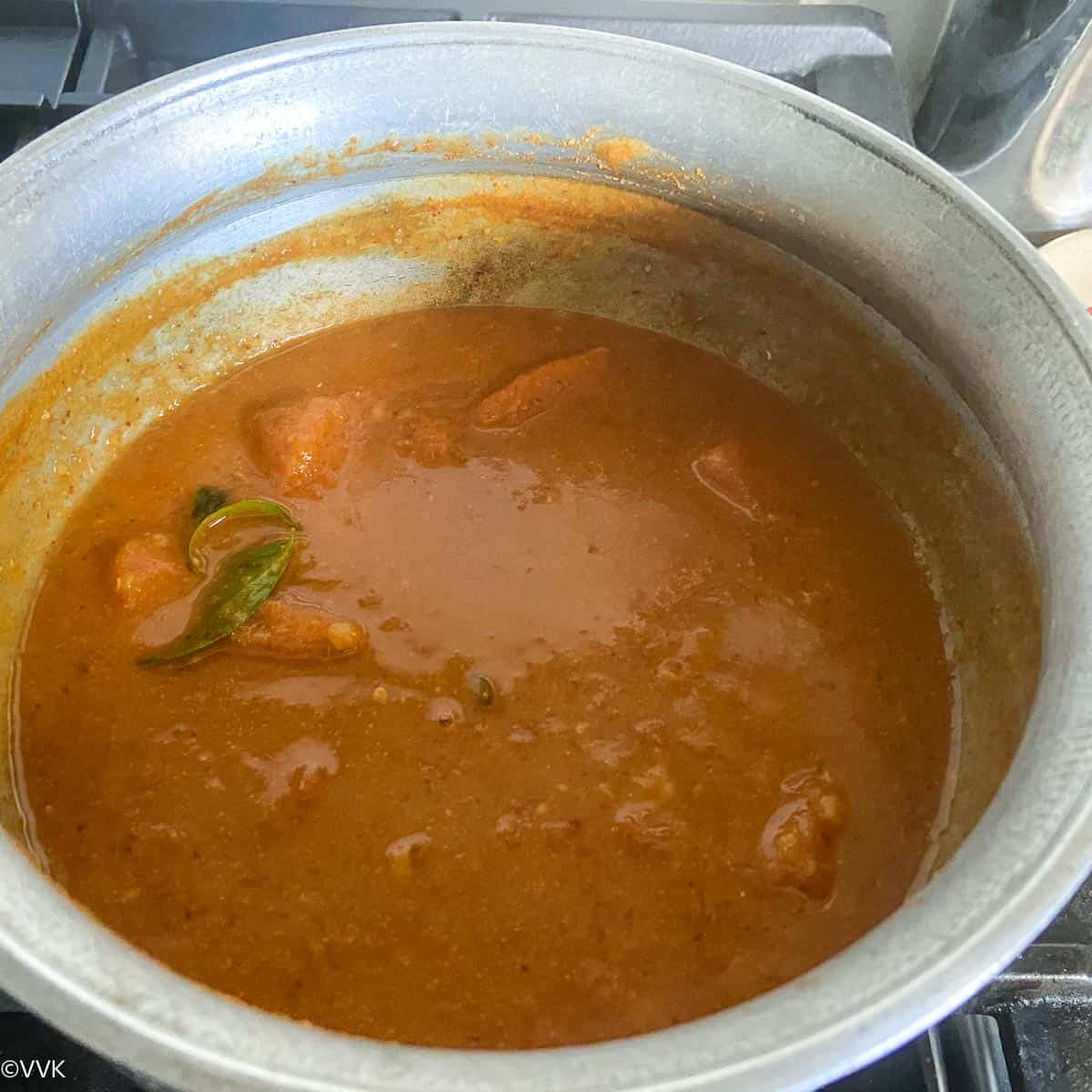
Prepare the tempering
- Heat a small tempering pan and add the oil. Add the mustard seeds, fenugreek seeds, asafoetida, and curry leaves when the oil is hot. When the mustard seeds splutter, turn off the heat and add the tempering to the sambar.
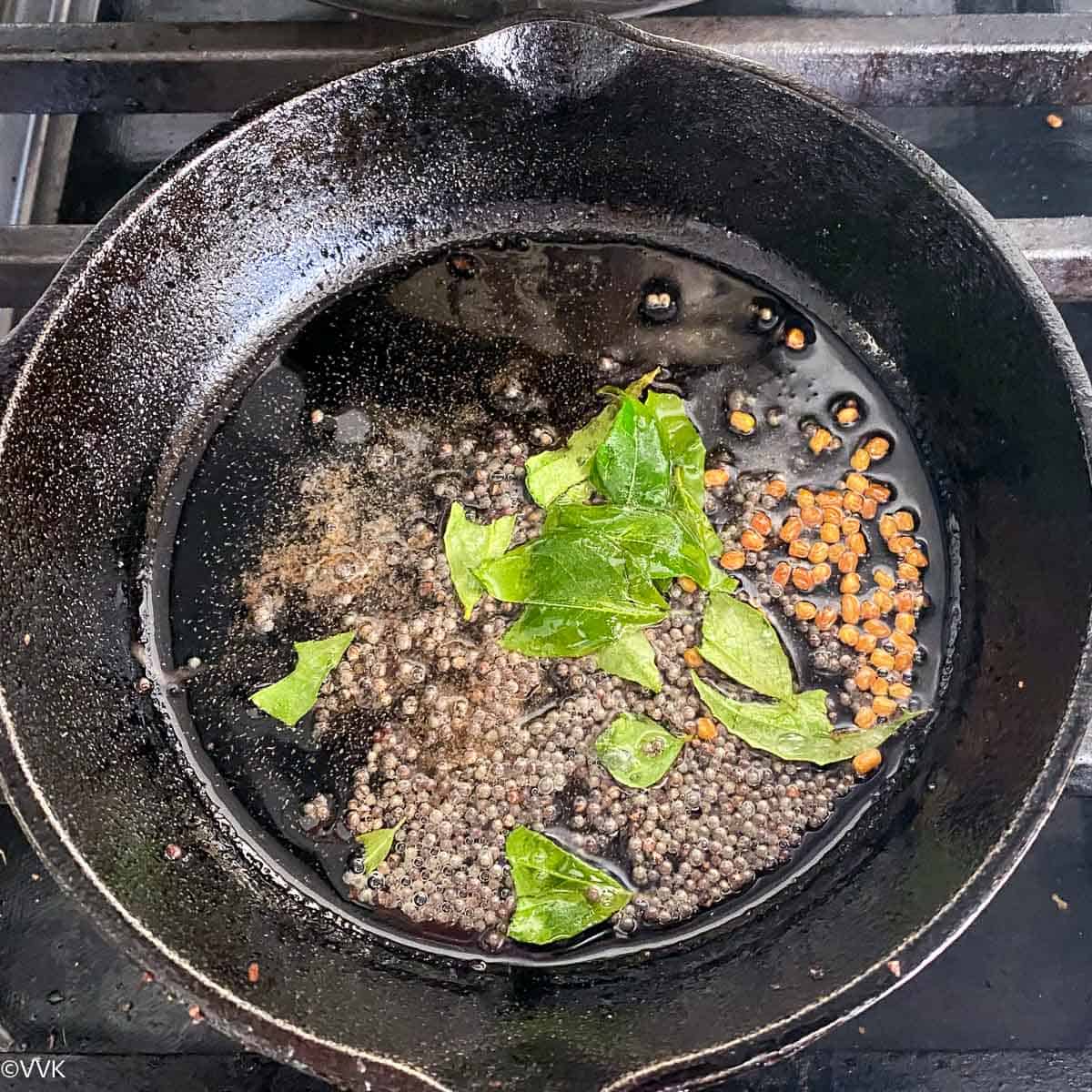
- That’s it. Sambar is ready. Serve hot with rice.
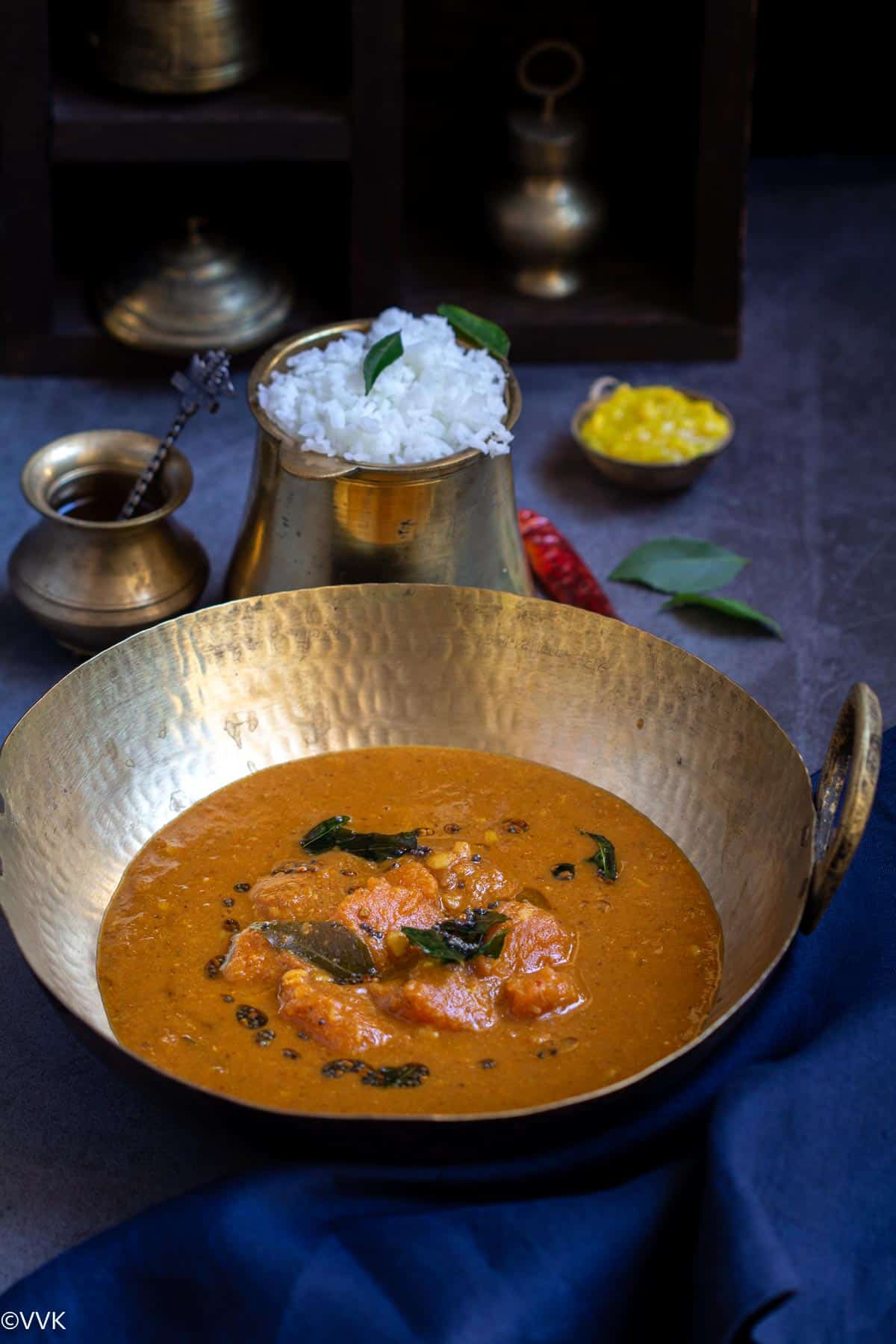
Recipe notes
- The Kashmiri or the Byadgi chili variety is for the color, but add one more of the regular red chili if you don’t have it. But as always, adjust the spices and salt as per your preference.
- You can add up to 2 tbsps of coriander seeds for this sambar if you like the flavor of coriander seeds.
- You can grind the masala coarsely or smoothly as per your texture preference. I have tried both, and I go with my intuition on that day.
- You can make this sambar with butternut squash, kabocha squash, radish, drumstick, etc. The cooking time varies depending upon the veggie you are using.
- You can start with tempering first, add the veggie, and cook as I did in the onion sambar.
- Rice flour helps to thicken the sambar. If you prefer thin consistency, skip the rice flour. Adjust the water measure as per your consistency preference.
Explore other arachuvitta sambar recipes
We have different kinds of sambar recipes with freshly ground spices. And here are the top four from my archives.
Loved this recipe?
If you try this pumpkin sambar, please don’t forget to comment and rate this recipe. If you have any questions, please leave a comment, and I will get to it ASAP. Make sure to follow me on my Pinterest or Instagram or join my Facebook Group for recipe updates and simple Indian meal ideas.
📖 Recipe
Arachuvitta Sambar Recipe | Yellow Pumpkin Arachuvitta Sambar | Parangikai Sambar
Equipment
- Instant Pot or Pressure Cooker
- Saucepan or kadai
Ingredients
Measurement Details: 1 cup = 240ml; 1 tbsp = 15ml; 1 tsp = 5ml;
- ¼ cup toor dal rinsed, and drained
- ¾ cup water
- ¼ tsp gingelly oil optional
- ¼ tsp turmeric powder
- 1 tsp rice flour
- 250 grams pumpkin
- 2 cups water divided (add more if needed)
- 1.5 tsp tamarind paste heaped
- 2 tsp salt or to taste
- 5 curry leaves
- 2 tsp jaggery or to taste
For the arachuvitta sambar masala
- 1.5 tbsp coriander seeds you can add upto 2 tbsp
- ½ tsp fenugreek seeds
- 1 tsp urad dal
- ½ tbsp chana dal heaped
- 3 dried red chilies Guntur variety. Adjust to taste
- 1 Kashmiri red chili or byadgi variety chili adjust to taste
- 4 tbsp coconut grated
- ¼ tsp oil optional
To temper:
- 1 tbsp oil
- 1 tsp mustard seeds
- ¼ tsp fenugreek seeds
- ⅛ tsp asafoetida
- 5 curry leaves
Instructions
- Rinse the toor dal and drain the water. Pressure cook the toor dal by adding ¾ to 1 cup of water and ¼ teaspoon of turmeric powder, and ¼ tsp gingelly oil, if using for 4 to 5 whistles. Let it cool and mash it.
- Add the rice flour and ¼ cup of water to this dal, mix well, and set aside. You can also cook the dal in Instant Pot. As it's ¼ cup of toor dal, you can use a PIP method and cook the toor dal for 20 to 25 minutes at high-pressure mode and release the pressure naturally.
- Heat ¼ teaspoon of oil in a pan, and when the oil is hot, add the coriander seeds, fenugreek seeds, urad dal, chana dal, dried chilies—dry roast all the above for 3 to 4 minutes over medium heat.
- Then add the coconut. After adding the coconut, turn off the heat—no need to roast for a long time.
- Transfer it to a mixer jar and let it cool.
- Grind it with ¼ to ⅓ cup of water into a smooth paste.
- Take a saucepan or kadai with a heavy bottom, add the chopped pumpkin and 1 cup of water, and cook the pumpkin until it’s soft and tender, for about 10 minutes. I used my uruli vessel for the sambar.
- Then mix the tamarind paste with ¼ cup of water and add it to the pumpkin mix. Add salt and let it cook for 5 minutes over medium-low heat.
- Then add the ground paste, rinse the mixer jar with ¼ cup of water, and add it to the sambar.
- Add the jaggery and curry leaves and bring the sambar to a boil.
- At this stage, add the mashed toor dal with rice flour to the sambar and mix well. Bring the sambar to a boil and turn off the heat.
- Heat a small tempering pan and add the oil. Add the mustard seeds, fenugreek seeds, asafoetida, and curry leaves when the oil is hot. When the mustard seeds splutter, turn off the heat and add the tempering to the sambar. That’s it. Sambar is ready. Serve hot with rice.
Notes
- The Kashmiri or the Byadgi chili variety is for the color, but add one more of the regular red chili if you don’t have it. But as always, adjust the spices and salt as per your preference.
- You can add up to 2 tbsps of coriander seeds for this sambar if you like the flavor of coriander seeds.
- You can grind the masala coarsely or smoothly as per your texture preference. I have tried both, and I go with my intuition on that day.
- You can make this sambar with butternut squash, kabocha squash, radish, drumstick, etc. The cooking time varies depending upon the veggie you are using.
- You can start with tempering first, add the veggie, and cook as I did in the onion sambar.
- Rice flour helps to thicken the sambar. If you prefer thin consistency, skip the rice flour. Adjust the water measure as per your consistency preference.
Nutrition
I am not a nutritionist. The nutritional information is provided as a courtesy and is an estimate only. It varies depending upon the product types or brands.


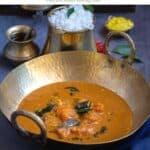
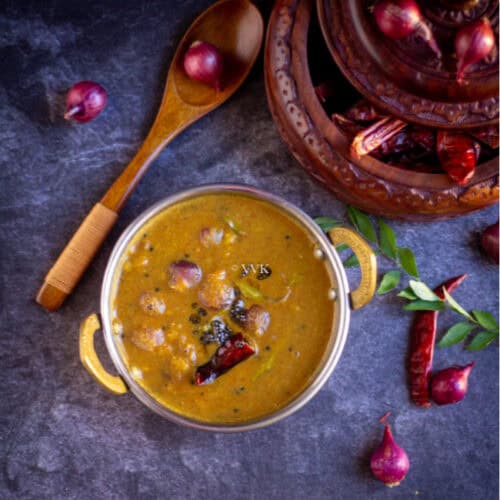
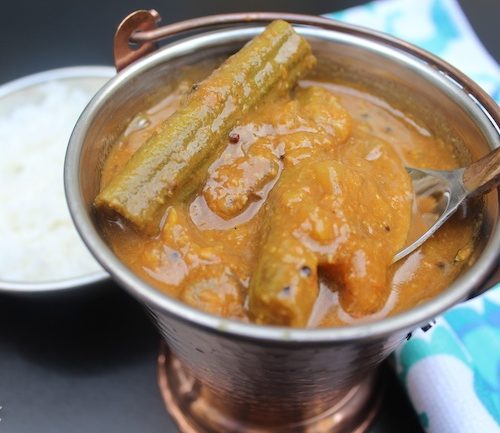
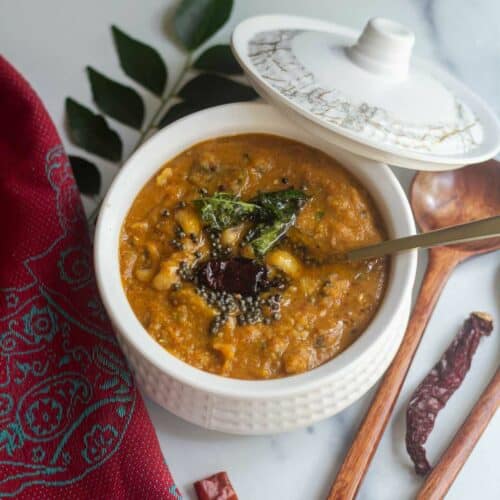
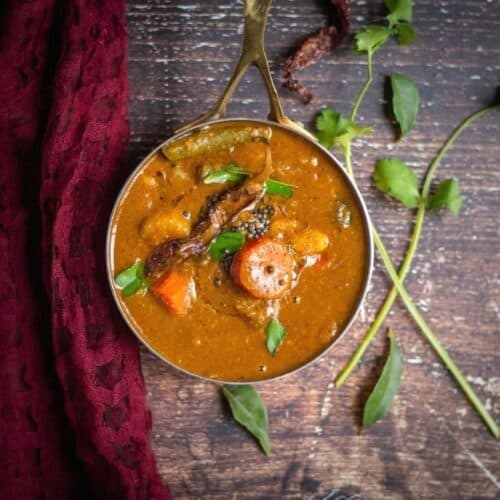

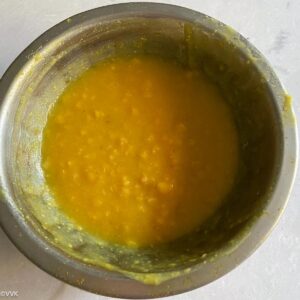
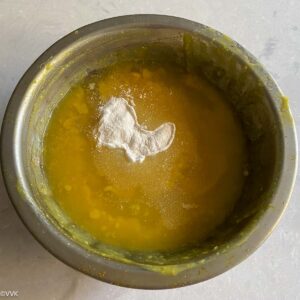
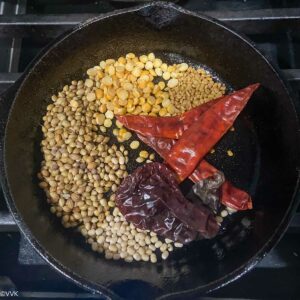
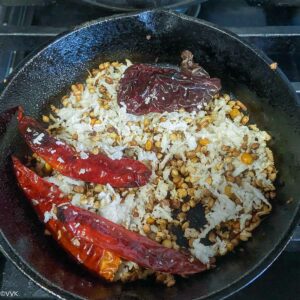
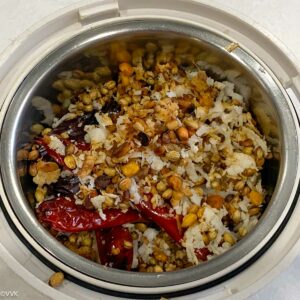
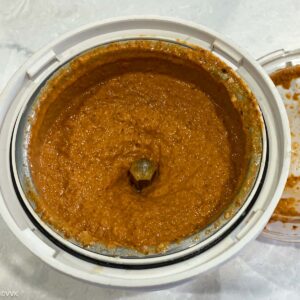
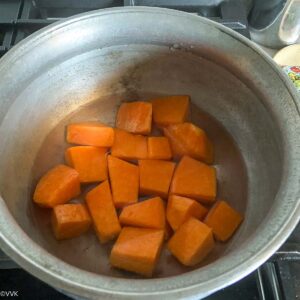
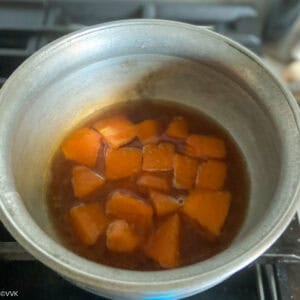
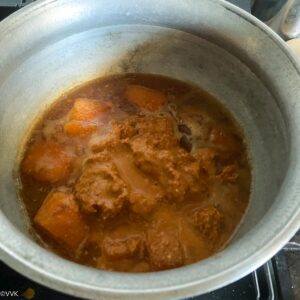
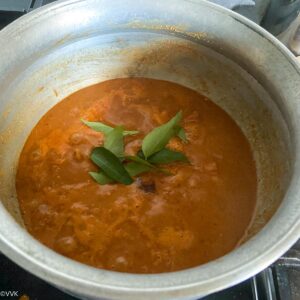
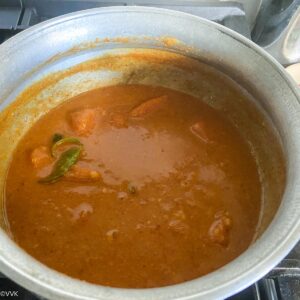
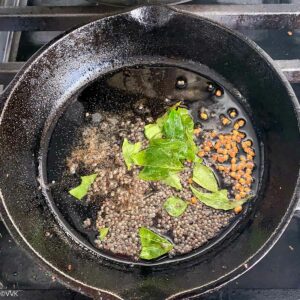

Leave a Reply